
Bifurcated Girls is a salacious illustrated story that first appeared in the June 1903 issue of Vanity Fair magazine. That’s not the glossy publication we know today, rather the a short-lived pulp magazine published by the Commonwealth Publishing Company of New York City (1902-1904).
The story is about a group “girls” wearing trouser and engaging in a spot of “rough-housing” with the kind of spanking that follows male adolescent dreams about what what “girls’ get up to on sleepovers after the pillow fights end. One of the girls then get dressed – trousers (yes), vest (check) and… D’oh! The “silly” thing’s forgotten to put a shirt on.
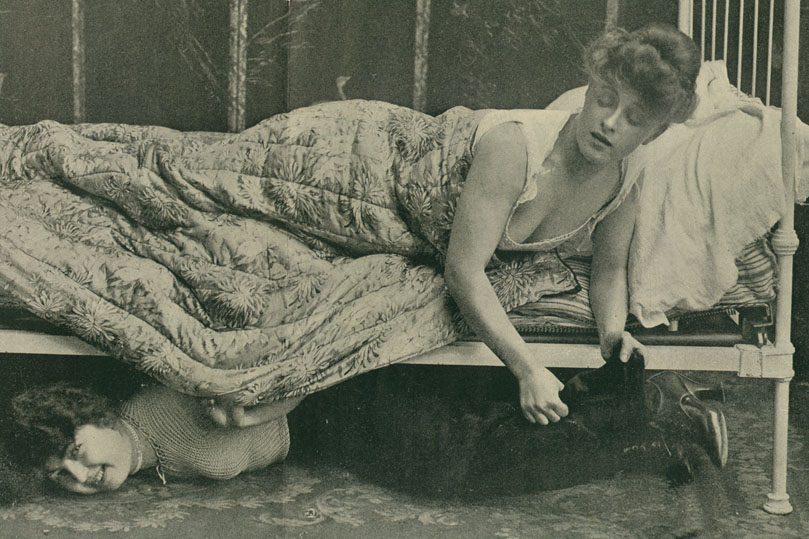
Girls in trousers has long been edgy stuff. In March 1942, Beverley Bernstein, 16, was sent home for her Brooklyn NYC school for wearing trousers. A protest ensued. As war raged, readers were invited to consider the burning question: “Should high school girls, particularly students of Abraham Lincoln High School on Ocean Parkway… be permitted to wear slacks to class?” (You can read the full story of that protest here.)
In 1971, Diana Crawshaw – who designed for such boutiques as Mr Freedom and Paradise Garage – wore a pair of ‘Bum Cleavage Trousers‘, which covered the legs not to the buttocks.
Lest you suppose men had it easy, during the height of the summer of 1929 after the Daily Mail newspaper has complained about the possibility of women tennis players not wearing stockings at Wimbledon, a London newspaper published a photograph of the renowned radiologist Dr Alfred Charles Jordan cycling to his office in Bloomsbury wearing shorts with his jacket.
An article in the tailoring magazine Tailor and Cutter thought the wearing of such attire was close to the end of civilisation:
If laces are unfastened, ties loosened and buttons banished, the whole structure of modern dress will come undone; it is not so wild as it sounds to say that society will also fall to pieces … Such restraints were not noxious: they were the foundation upon which civilisation rested and protected men from savagery and decadence.
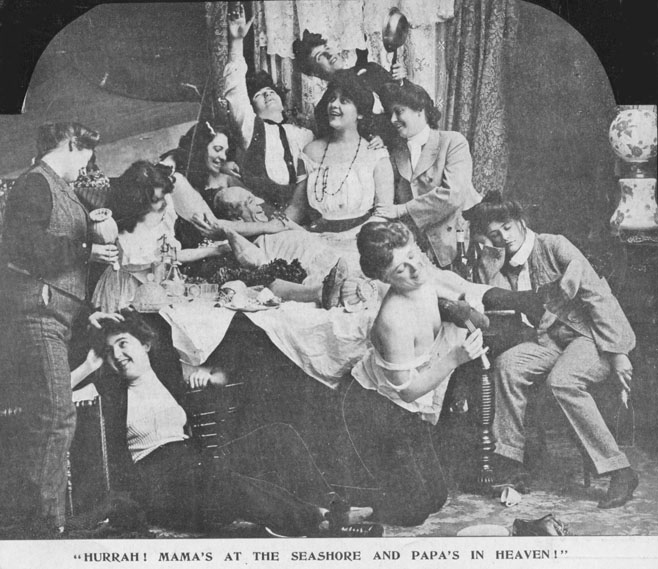
‘Jeff’ in the first girlie magazine
Back in Vanity Fair’s feature spread, the sapphic message seemed clear, but there is a man in the story and we get to meet Jeff (“He’s cool”.) That’s him in the middle of ten women (above) being pampered, rubbed and grinning like the Cheshire cat.

Dian Hansen, who wrote the History of Men’s Magazines (“a euphemism for sex magazine”) believes this issue of Vanity Fair was the foundation of American girlie mags:
While France had a well-established men’s magazine industry by 1900, America was just showing its ankles in 1903. A magazine called Vanity Fair (unrelated to the current incarnation) was the raciest thing around, and rooming house loozies the hotties of the time. In this New York, tabloid girls who drank like men might strip down to their petticoats and fall into bed together, exposing their corset cover and stockings to peeping male boarders. The famously loose morals of stage actresses made them popular subjects for these shenanigans, but the biggest thrill of all was bifurcation. “What?” one may well ask. Bifurcation, meaning “split in two”, referred to the contours of a woman’s legs revealed by her donning men’s trousers. Bifurcation was a regular and very popular feature in Vanity Fair, it’s popularity leading to Vanity Fair’s Bifurcated Girls.
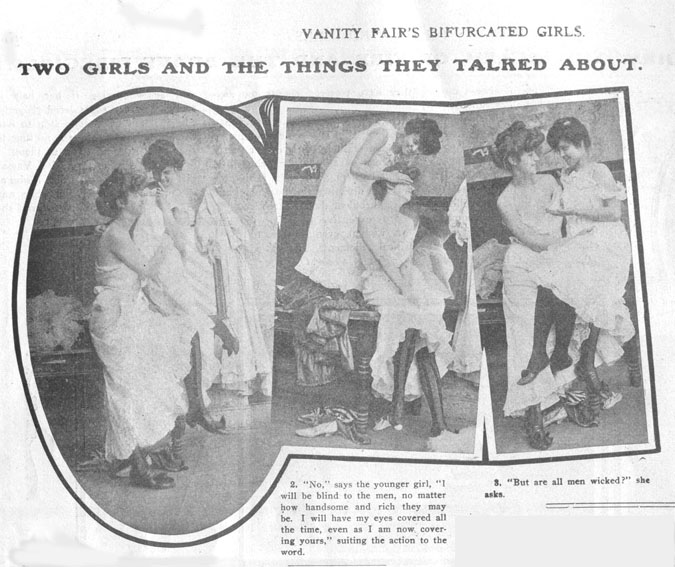
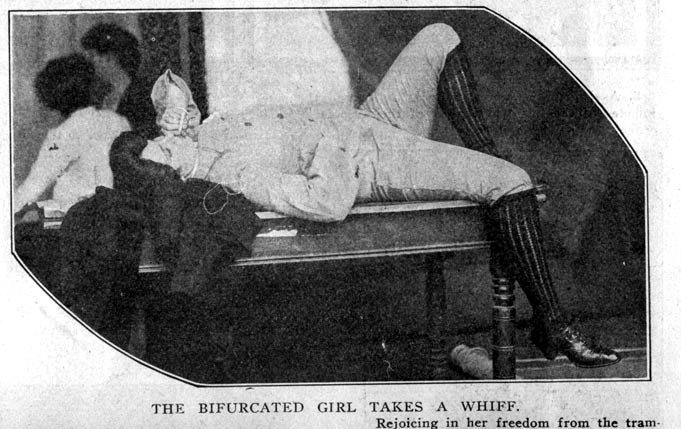
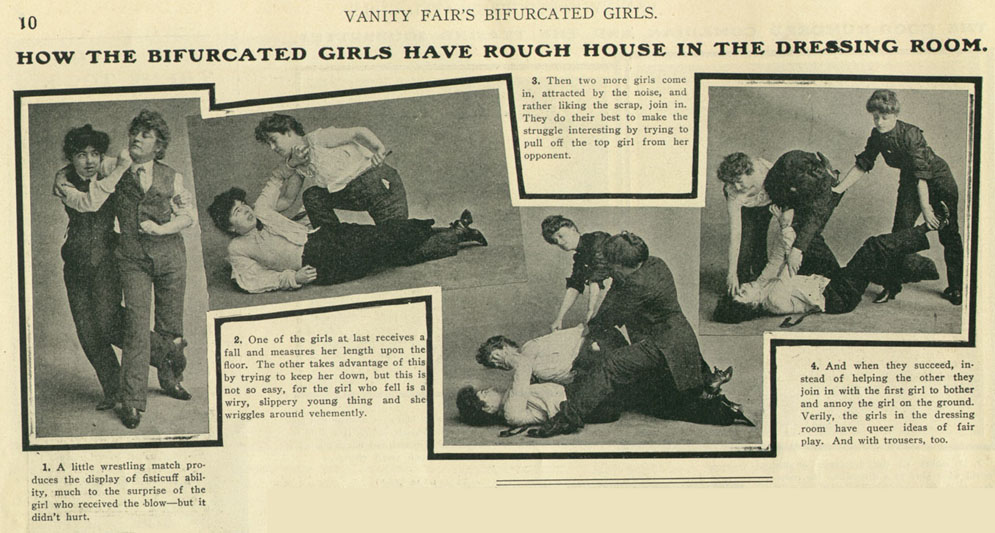
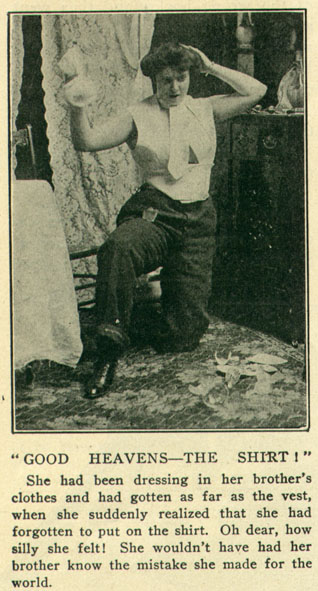
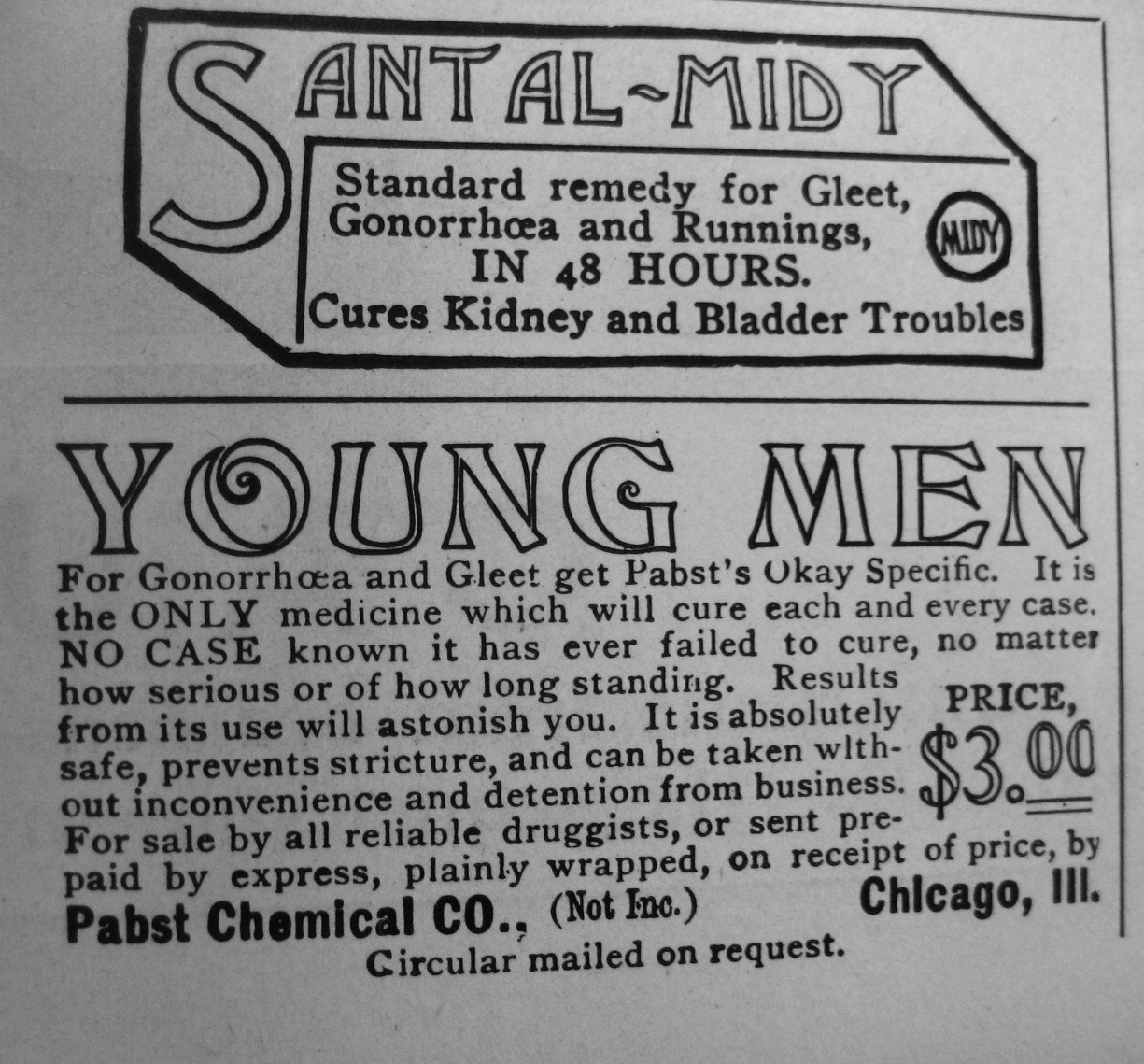
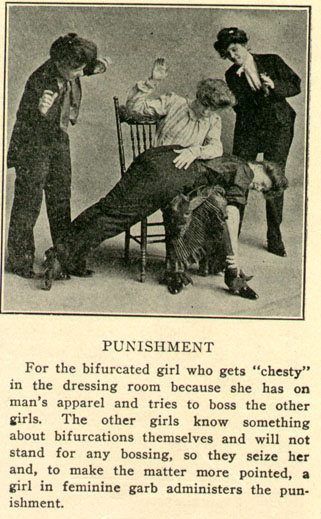
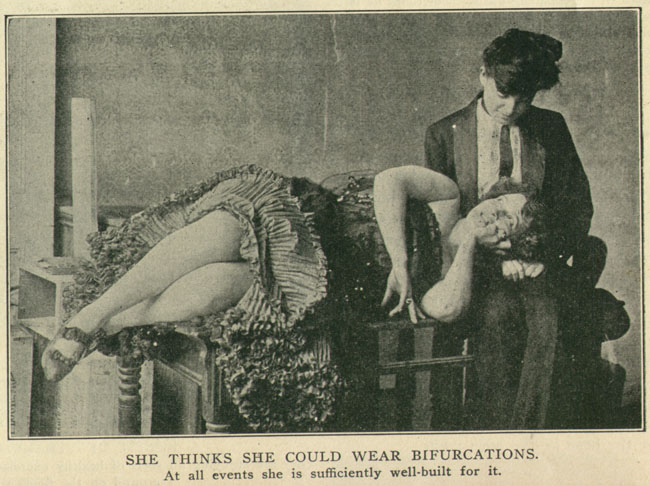
Would you like to support Flashbak?
Please consider making a donation to our site. We don't want to rely on ads to bring you the best of visual culture. You can also support us by signing up to our Mailing List. And you can also follow us on Facebook, Instagram and Twitter. For great art and culture delivered to your door, visit our shop.



